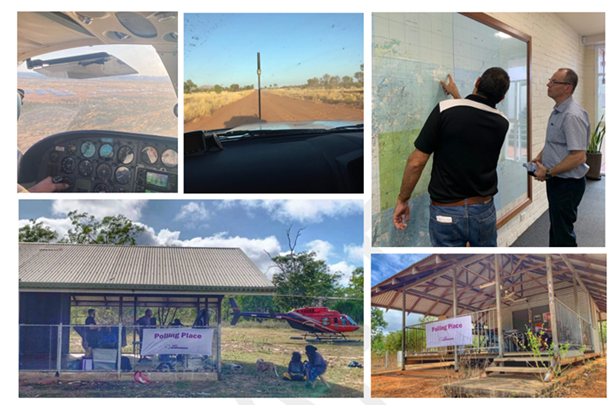Australian Electoral Commission



The 2023 referendum will see more voting services delivered to remote communities than any other vote in Australia’s history.
Australian Electoral Commissioner Tom Rogers today said a key part of the AEC’s role in upholding Australia’s proud democratic traditions is to enable participation.
“We’ve announced record enrolment for all Australians ahead of the referendum, we expect a return to pre-pandemic service levels for overseas voting, there’ll be an increase in mobile polling in residential care settings and now we’ll be delivering a significant increase to our remote voter services as well,” Mr Rogers said.
“At this stage our consultation and remote voting plans for the referendum are well progressed, and we’re confident we’ll be visiting approximately 35% more remote communities this referendum than we have in the past, and spending at least 80% more time in communities.
“We’re actively out in communities continuing to consult and communicate on how best to facilitate voting that is tailored to a community’s particular needs and circumstances.”
“There are many elements to consider - the referendum date when it’s known, impact of seasonal weather events, managing the complex delivery logistics common in remote and very remote Australia, and working around community events and cultural protocols.”

Images: Remote voter services being delivered during the 2022 federal election
Voting services in remote communities will start 19 days ahead of voting day, a week ahead of when early voting centres in other localities will open.
“We asked Parliament for an additional week for remote voter services and the change was made – it provides for an expansion to our services and contingency in what is a very complex schedule.”
“The first votes cast in the 2023 referendum will be cast from remote locations.”
The AEC’s remote voting service schedule can only be finalised once a date is known - a full list of remote voting locations will be released at that time.
Remote voter services is most often a scheduled visit from a mobile voting team – 3 or 4 AEC polling officials travelling to a community with as little as 20 enrolled voters.
“We will be using small planes, helicopters, 4WDs and occasionally boats in order to cover the 3.4 million square kilometres our remote voting teams will traverse,” Mr Rogers said.
The AEC will promote a remote voting service ahead of time by whatever means is available – on community noticeboards, via local organisations, through advertising and direct communication. Material regarding how to vote formally is also available at polling locations in remote communities, as it is for all voting services the AEC delivers.
Where possible, the AEC employs members of local communities to perform a role in assisting community members to understand, and be comfortable with, the voting process.
Mobile voting teams visiting remote communities is not a legislated requirement. However, it has long been an essential part of the AEC’s delivery of Australia’s federal elections. During the 2022 federal election mobile voting teams visited 348 remote communities.
Changes to the remote voting schedule do occur. The AEC closely monitors the progress of this complicated logistical undertaking as it progresses.
“Access to voting in Australia is lauded internationally - thousands of polling places on voting day, hundreds of early voting centres, postal voting, overseas voting centres, telephone voting for people with vision impairment, mobile voting in healthcare settings and now this increase in services for remote communities,” Mr Rogers said.
“You can’t ever possibly bring the vote to the doorstep of all 17.5 million enrolled Australians but anyone who seeks to vote in the referendum, and plans their vote, has a service available.”